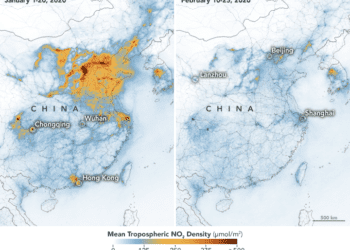It’s not just Chinese air that’s dirty and polluted, it’s the coastline too. According to the Chinese State Oceanic Administration (SOA) some 41,000 sq km of coastline is polluted with inorganic nitrogen, reactive phosphate or oil, to name a few. This amounts to roughly 81% of its entire coastline, which actually marks a mild improvement over 2013 despite an increase in ecological incidents such as red tides and algal blooms.
Roughly 90% of coastal cities suffer from intermittent water shortages. China’s mangrove swamps have decreased in area by 73% and coral reefs by 80% since the 1950s, and coastal wetlands have shrunk by 57%. This past decade has arguably seen the most damage done to the Chinese coastline, along with its fragile ecosystem, as more and more pollution was discharged into estuaries. Three-quarters of the 445 major waste discharge points along coastlines failed environmental requirements, and a tenth is contaminated with heavy metals, the insecticide dichlorodiphenyltrichloroethane (DDT) and petroleum hydrocarbons. These are the most dangerous pollutants to the local wildlife.
The run-off chemical fertilizers in combination with discharged animal manure from farmland built up excessive amounts of nutrients in the waters and spur algae blooms. Over the past 20 years, China’s coastal waters have seen an average of 83 ‘red tides’ a year — harmful algal blooms characterized by the red pigment of the dominant phytoplankton species — mostly in the East China Sea. ‘Green tides’, dominated by green plankton, occur mostly in the Yellow Sea and hit the economy harder. In 2008, the direct economic loss was 1.3 billion Chinese yuan (US$208 million). In 2009, China was hit by ‘brown tides’, which kill shellfish.
While the area of polluted coastal waters dropped from 44,340 sq km in 2013 to 41,000 sq km in 2014 the number of serious incidents such as red tides and algal blooms increased in 2014. These serious incidents will not be without consequences, both economic and for the local ecosystem. Fishery resources are already stretched very thin. Krill in the East China Sea are on the brink of extinction, for instance.
“There is an urgent need to set up a long-term monitoring network to access changes in coastal water chemistry and their impact on marine ecosystems,” Gao Kunshan, a marine ecologist, at Xiamen University,





